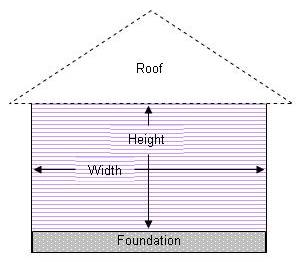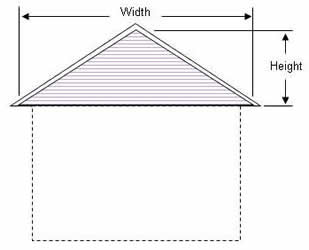
Figure 1a - Insulated vinyl siding
Many manufacturer's sell siding by the square. A square is a construction term which is the equivalent of 100 square feet of coverage.
For simplicity we are using square feet. If the siding you have chosen is sold by the square, then divide your total square feet by 100 to determine how many squares you will require.
It is impossible to calculate the requirements of sheets of siding, trims and moldings by the piece as manufacturer's have not standardized on lengths.
It is wise to purchase 10% more product than you require as there will be some waste. You should also be aware that many siding manufacturer's have die lots and it is important, if the siding you have chosen has a die lot number that all of the siding is from the same die lot. Color variations are generally not noticeable unless individual pieces of siding are placed side by side or above one another.
Note: Many siding dealers and distributors will take back unopen cartons of siding as well as full length pieces of trim and molding. Before you buy, check out the terms of sale with your supplier.
The first part of the measuring exercise is to determine how many square feet of siding material you will need. This requires breaking the exterior area of the home to be sided into rectangles and 90 degree triangles, as shown in Figure 1, 2, 3 and 4.
Walls:

Figure 1 - Measuring walls for siding
Wall 1 = Width X Height =
Wall 2 = Width X Height =
Wall 3 = Width X Height =
Wall 4 = Width X Height =
Total For All Walls =
Note: Depending on the shape of your home you may have more than 4 walls. Just add the additional walls to the total using the same calculation of "width X height".
Roofs:
The area of the roof is a little more complex. First because of the number of variations to roof shapes and second because you are generally dealing with triangles rather than rectangles.
Plain Gable Roof End:

Figure 2 - Measuring a plain roof gable end for siding
Gable 1 = Half of Width X Height =
Gable 2 = Half of Width X Height =
Total For All Gables =
Note: Depending on the shape of your home you may have more than 2 gables. As well with complex roof designs you could have a variety of shapes to calculate. Just add the additional roof components to the total.
